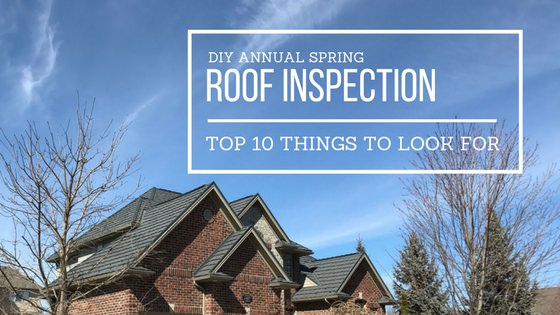Annual Spring Roof Inspection | Top 10 Things to Look For
It is important to do a “Walk-Around” of your roof each spring or after any extreme weather event. Canadian winters are harsh and often temperatures will rise and fall in a short span of time. Drastic temperature changes and winter’s ice, rain, snow and hail take a huge toll on your roof. When coupled with improper or inadequate ventilation, these conditions create a perfect storm for maximum damage to your roof and roof’s structure. A simple yearly DIY roof inspection in spring can save you time and money – better spent on getting outside and enjoying that sunshine!
Here are the top 10 things to look for:
- Missing Shingles: missing shingles expose your roof deck and allow for significant future damage.
- Damaged Shingles: cracked, torn, bald or missing shingles are a sign that your roof’s life cycle has come to an end. Replacing your roof before damage ensues could save you thousands of dollars in damages
- Loose Materials and Wear: Watch out for an excessive amount of shingle granules (they look like large grains of sand) in the gutters — this is a sign of advanced wear. Loose material or wear around chimneys, vents, pipes or other penetrations, require immediate attention.
- Moisture, Rot or Mold: Note that wet spots may not be directly under your faulty shingle; water can travel down to its lowest spot before it drips. Mold, fungi and bacteria can grow quickly — within 24 to 48 hours of a water-related problem.
- Attic Issues: some of the biggest telltale signs that your roof needs repair or replacement are seen from the inside. If you haven’t already, get your flashlight and make a trip up to your attic space to look for places where the roof deck is sagging, signs of water damage or leaking, dark spots and trails, outside light showing through the roof.
- Chimney Damage: take a pair of binoculars and have a good look at your chimney. If it is brick, are there signs of cracking or crumbling? Take a close look at the flashing around the base of the chimney stack. If the flashing looks loose then you will need to call a roofing or chimney professional. Loose chimney flashing is a very common cause of leaks.
- Skylight Flashings: loose skylight flashing is another common culprit for leaks. Be sure to check for skylight issues from the exterior and interior of your home.
- Animal Infestation: check around chimneys and vents for signs of critters trying to chew their way through your roof. In early spring, female raccoons have very strong nesting instincts. Warm dark attic spaces are a favourite for raccoons in Ontario. Once they get in you will need a wildlife professional to get and keep them out. Metal roofing is a strong deterrent for raccoons, so if you have a persistent raccoon problem this could be a great solution for you.
- Eavestrough Issues: since you are already checking your roof, make sure you take note of any sagging or loose eavestroughs. Proper water mitigation around your home can save you a world of problems like flooding, leaks and mold.
- Warping Roof Deck: last but not least, be sure to take a good step back from your roof at every angle. If the roof lines are starting to look uneven or the roof deck is starting to sag you will need to call a roofing professional to do a thorough attic inspection. Common causes for warping roof lines are sagging trusses or thin plywood used for decking.
Final Steps
If you notice any of the above issues, then it is time to call a licensed and insured roofing professional. If your roof held up well through the winter and is looking in good shape, then congratulations! You can relax and enjoy the much anticipated fair weather with peace of mind that your roof is doing its job – keeping your family and belongings safe from the elements.






Leave a Reply
Want to join the discussion?Feel free to contribute!